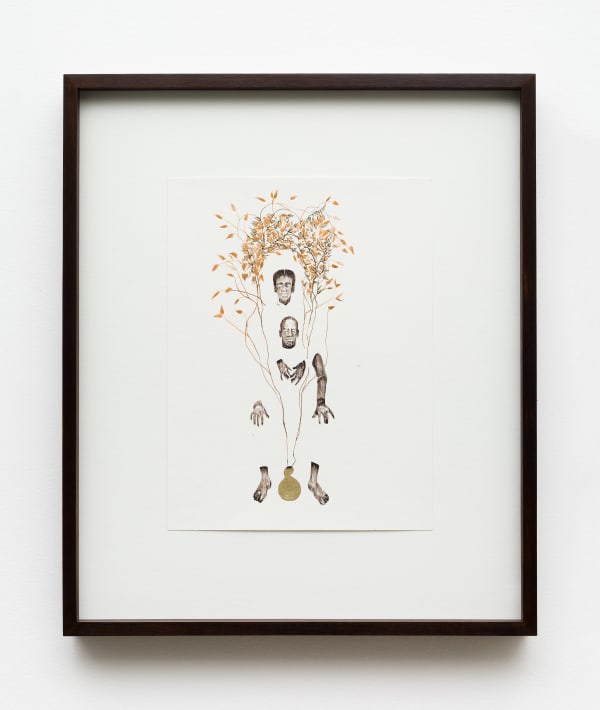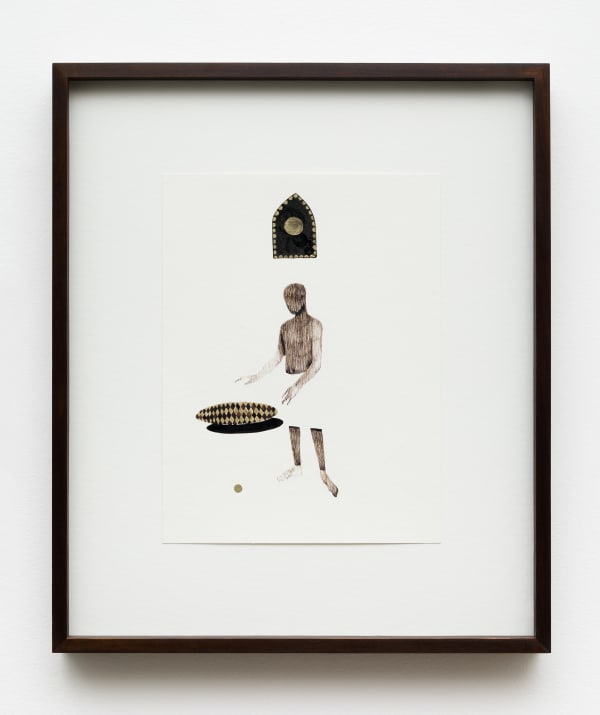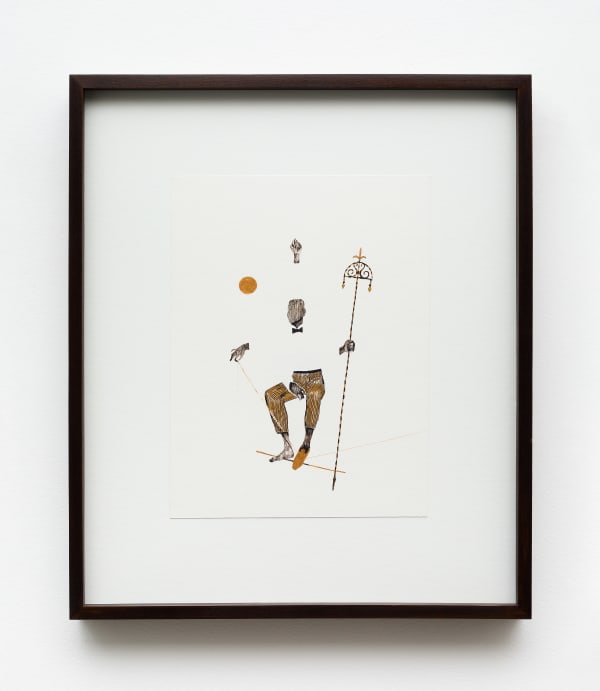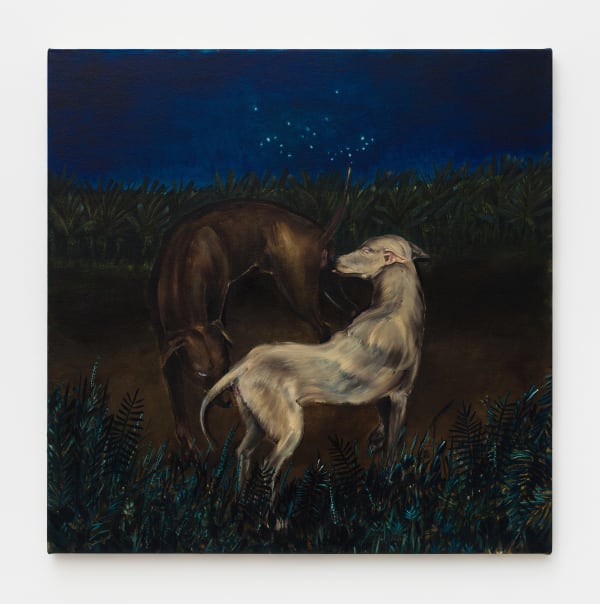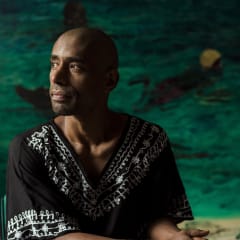Outros Ofícios Antonio Obá
Mendes Wood DM is proud to present Outros Ofícios, the much anticipated first exhibition of work by Antonio Obá in the Brussels gallery space. This will be the first opportunity for European audiences to experience Obá’s practice in all its colorful complexity, not including a solo presentation at FIAC art fair in October 2019. Taking over both floors of the Brussels gallery, the exhibition is composed of new works on canvas and on paper, all made between 2020 and 2021.
In this kaleidoscopic mix of references, wholly unexpected constructions become possible. An image of a historical figure such as Ruby Bridges, for example, the first African-American girl be enrolled in a primary school for white students in New Orleans, in 1960, becomes conflated with the myth Saint Lucia of Syracuse who, in turn, also becomes Ewa, a female character in Yoruba mythology. Similarly, a 19th-century family photograph of former slaves Rose, Edward and Abraham Perkins, now landowners, collides almost impossibly with the mystical Christian symbolism of French Renaissance tapestry. Elsewhere, one of the most famous Christian saints, Saint James the Great, becomes the Orixá Ogum, the warrior god from the Yoruba, Candomblé and Voudou traditions, who follows in the footsteps of a small boy whose likeness is taken from an image of Miguel, a five-year-old boy who fell off a balcony in Recife, Brazil, in 2020, and whose death generated a media scandal in his home country.
Unexpected associations such as these constitute a way for Obá to address topics such as racial politics, political corruption, colonialism and slavery, as well as questions of belonging, religion and spirituality.
This line of enquiry into colonialism and slavery forms the basis of the artist’s new series of delicate works on paper, made with walnut extract, golden temper and golden china ink. These compositions are based on the artist’s extensive research on objects related to Brazilian slavery in the collections of the Museu Afro Brasil, São Paulo, and the Casa dos Contos, Minas Gerais.
The drawings from this Outros Ofícios (which translates to “other trades”) series consist of allegorical representations of an entire instrumental apparatus created by Brazilian slave labor in the 18th century. Many of the enslaved Africans sent to the region of Minas Gerais had technical skills and knowledge of metallurgy, architecture and mining that were foreign to Brazil at the time. This creates a perverse link between the tradition of craft and manufacture and a brutal cycle of hard work and production of objects that, by their very function, afflicted and further violated the bodies of these enslaved people, from the saws, mills and bricks, to the chains which kept them captive – a whole technology focused on physical submission.
By stripping the original function of these objects of oppression, the artist subverts history and restores agency and power to the subjects of these drawings.
Bodies in a swimming pool or growing like plants in a garden, a handsaw held upside down by two figures who refuse to cut down a small tree – these are the sorts of chimerical, almost allegorical images extracted from facts and real dramas that emerge from my paintings and drawings.
The narrative of each artwork brings forth the transformative mischief of an ironic hero who side-glances at the past – a past marked by the ethos and the social roles of segregation, exploration and persecution – to subvert and manipulate inherited stories, looking ahead to propose alternative meanings.
Tangled in the netting of a cruel past, which at times insists on breathing out sinister airs into the present, I try to pull the thread of history, weaving with form, gesture and color compositions that propose the revision of facts or surround themselves in an almost ritualistic iconography. It is a journey that instead of reviving images of pain sublimates and transfigures pain as a means to better understand oneself.



